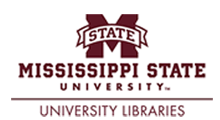
Theses and Dissertations
Advisor
Toghiani, Hossein
Committee Member
Wang, Chuji
Committee Member
Rai, Neeraj
Committee Member
Xiang, Yizhi
Date of Degree
8-7-2025
Original embargo terms
Immediate Worldwide Access
Document Type
Dissertation - Open Access
Major
ENGINEERING (CHEMICAL ENGINEERING)
Degree Name
Doctor of Philosophy (Ph.D.)
College
James Worth Bagley College of Engineering
Department
Dave C. Swalm School of Chemical Engineering
Abstract
Electrified CO2 conversion via nonthermal dielectric-barrier discharge (DBD) plasma presents a promising pathway for integrating renewable energy into the carbon cycle, addressing the dual challenges of CO2 reduction and sustainable fuel generation. In this research, DBD plasma technology was integrated with a sorbent material and/or catalytic materials for CO2 desorption and conversion. Specifically, with Ni/Al2O3 as the catalyst, we investigated CO2 splitting (CO2 to CO and 0.5O2) and hydrogenation (CO2 and H2 to CO and H2O) under adiabatic and subcooled conditions. We find that CO2 splitting shows higher efficiency than hydrogenation, particularly at relatively lower power inputs. While CO2 hydrogenation can be enhanced under adiabatic conditions, CO2 splitting is favored under subcooled conditions, even though the reaction is highly endothermic (deltaH298K 283 kJ/mol). Specifically, our results demonstrate that optimized plasma catalytic synergy is achieved under room-temperature water and/or ice-water-cooled conditions. CO2 conversion reaches up to 53% at a partial pressure of 10% (balanced by Ar) and a power of approximately13.5 W, with a maximum energy efficiency of 11% achieved at lower power (approximately 2 W) and higher CO2 partial pressure (80%). Furthermore, DBD plasma was integrated with a lime-based sorbent for electrified CO₂ desorption and in-situ conversion. Up to 82% of CO₂ captured from the air by CaO can be converted into CO with a 10% H₂/Ar discharge, while CH₄ production is facilitated through a dual-function Ni-Ru CaO/CeO₂-Al₂O₃ catalyst or a physical mixture with Ru/Al₂O₃. Kinetic analysis reveals that both desorption and hydrogenation exhibit first-order reaction behavior in a non-steady-state semi-batch configuration. Lastly, we evaluated the effect of two hydrogen feed compositions on CO2 hydrogenation over a Ni-MoC catalyst, examining its effects on conversion rates and product selectivity. An optimal applied voltage of 7kV was found to maximize CH4 selectivity while maintaining high CO₂ conversion rates. These results collectively show that plasma-driven electrification enhances CO₂ conversion and effectively integrates capture and utilization processes under low-temperature, renewable, and environmentally friendly conditions.
Sponsorship (Optional)
Holly construction company (Larry & Gloria Kramer)
Recommended Citation
Umeojiakor, Chinwendu Theresa, "Non-thermal DBD plasma-induced CO₂ capture and conversion to value added chemicals" (2025). Theses and Dissertations. 6718.
https://scholarsjunction.msstate.edu/td/6718


